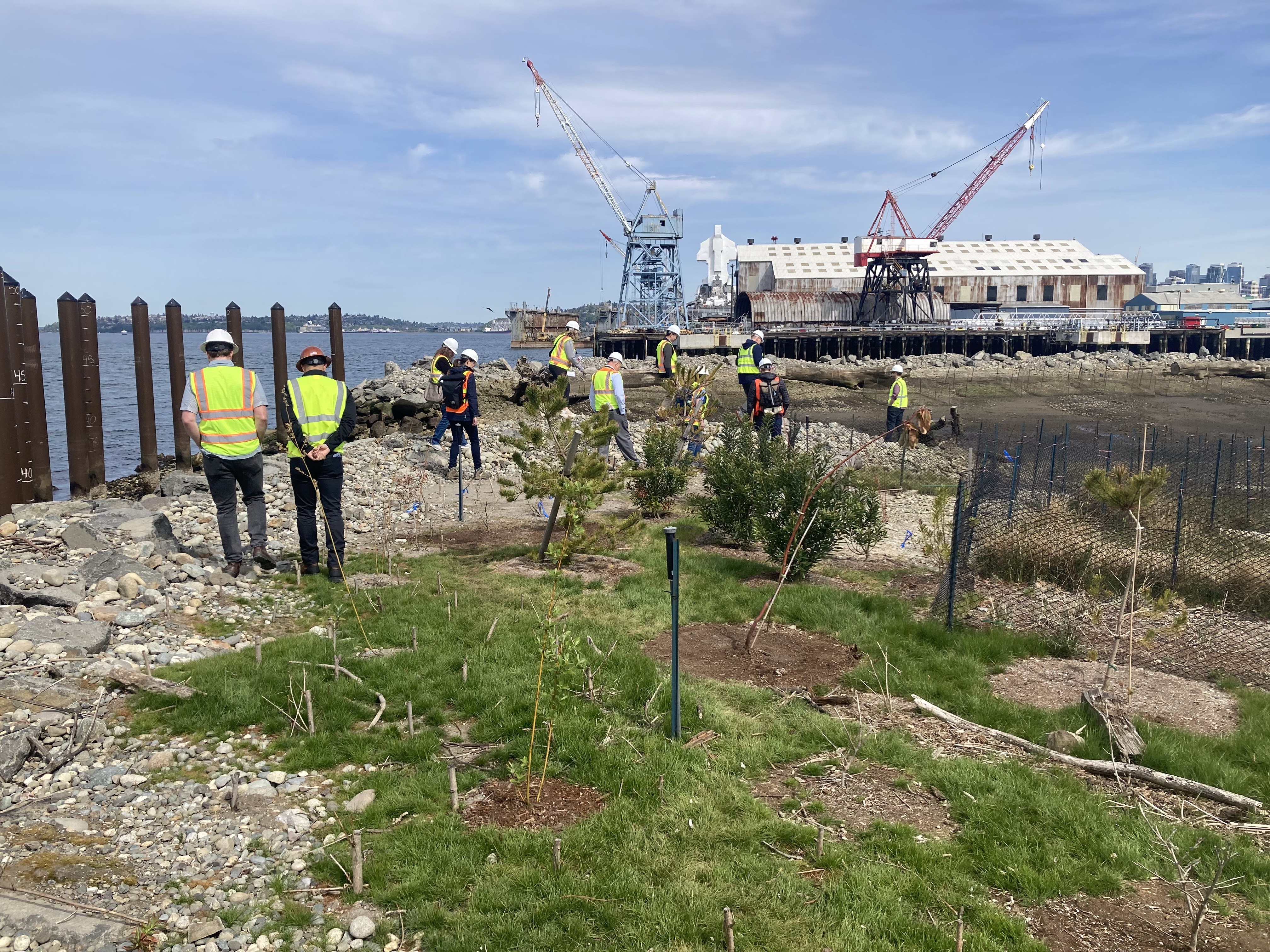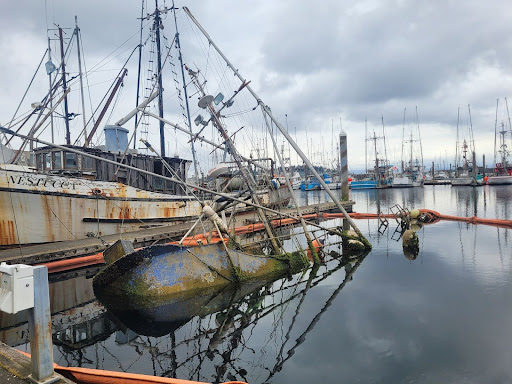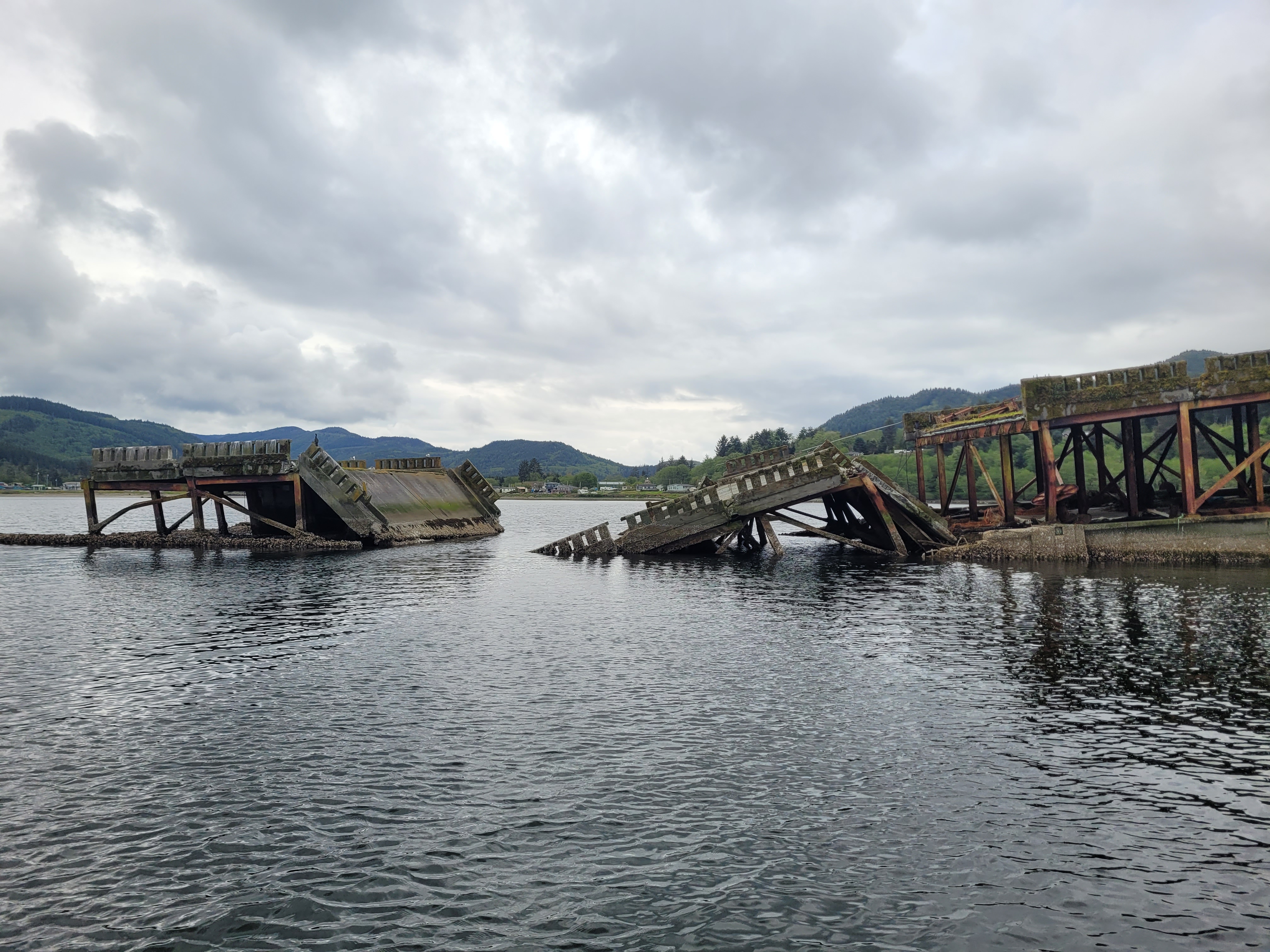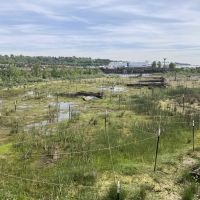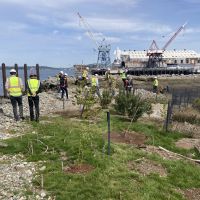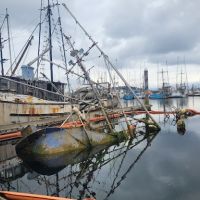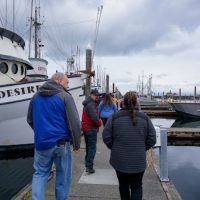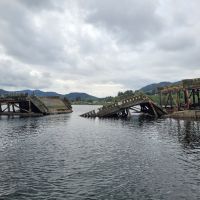OR&R Spotlights Environmental Restoration and Debris Removal Projects in Visit to Washington State Field Projects
MAY 6, 2024 — On April 23 - 24, the Office of Response and Restoration (OR&R), led by Director Scott Lundgren, hosted a two-day tour of major restoration and debris removal projects in Washington State for Deputy Assistant Administrator for Ocean Services and Coastal Zone Management Paul Scholz. A congressional staffer for Senator Patty Murray’s (D-WA) also joined for key events.
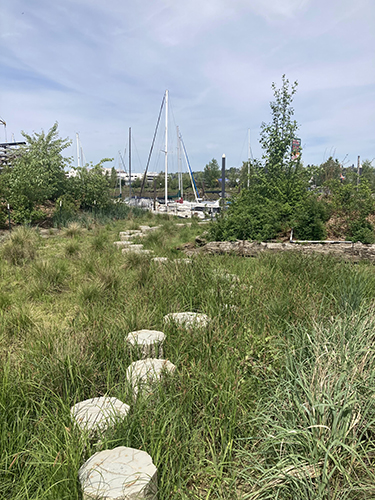
On day one, OR&R’s Assessment and Restoration Division led two important site visits to showcase the Damage Assessment, Remediation, and Restoration Program (DARRP). The group, alongside partners with NOAA’s Restoration Center and nonprofit Long Live the Kings, toured two restoration sites along the Lower Duwamish River, including a site as a result of a recent settlement with Vigor Industrial/Exxon and a restoration bank created by the Port of Seattle. The Lower Duwamish River is a highly developed, urbanized and industrialized estuary. Hazardous substances have been released since the early 1900s with over 30 hazardous substances documented in its sediments. The river includes three Superfund sites: Lockheed West, Harbor Island, and the Lower Duwamish Waterway. Toxic contaminants resulted in injuries to fish, birds, wildlife and their habitats and recreational uses, including fishing. Cleanup operations for the river are ongoing, and will continue for many years. Though cleanup is not yet over, NOAA and its various partners in government and industry have already begun working on restoration efforts to compensate for the lost natural resources, including a settlement with Vigor Industrial (Vigor).
The day started with a visit to Vigor Industrial’s recently completed Southwest Yard Habitat Restoration Project. The project converted an unused, derelict, and contaminated portion of the working shipyard into an important refuge in the otherwise highly industrialized waterway for feeding and rest for out-migrating young salmon and other fish and wildlife. The Southwest Yard was the second onsite project, following the West Waterway Bench, which was constructed in 2006. These projects addressed both cleanup (remediation) and natural resource restoration goals as part of a Natural Resource Damage Assessment (NRDA) settlement with Trustees. The Elliott Bay Trustee Council, including NOAA, U.S. Fish and Wildlife Service, the State of Washington, the Muckleshoot Indian Tribe, and the Suquamish Tribe of the Port Madison Reservation, provided oversight on the design, implementation, and monitoring of the Vigor restoration projects. Then, the group met with the Port of Seattle to tour the Duwamish River People’s Park, also known as Terminal 117 (T117), T117 is a recently completed restoration bank project in Seattle’s South Park neighborhood that was developed in coordination with the Trustees to meet their restoration goals. The Port of Seattle, the project implementer, intends to sell restoration “credits” to potentially responsible parties to resolve the parties’ NRDA liability or potentially for other mitigation requirements. The Port of Seattle finished project construction in January 2023. Post-implementation, the Port of Seattle will provide 10 years of monitoring and maintenance, and then long-term stewardship into perpetuity, as required by Trustees. Both projects will directly benefit coastal, historically impacted, and Indigenous communities and economies that live along the Duwamish River and depend on these waters for clean and vibrant fisheries and recreation.
On day two, the group traveled to Neah Bay, Washington to learn more about a selection of marine debris removal projects. Projects were funded by Bipartisan Infrastructure Law resources and distributed by the NOAA Marine Debris Program within the Office of Response and Restoration as part of a nearly $15 million award to the National Marine Sanctuary Foundation (NMSF) to remove large marine debris across the National Marine Sanctuary System. Working with the Makah Tribe, the Quileute Tribe, California State Parks, and the National Park Service, among others, the project will soon begin removing debris from five national marine sanctuaries and two Tribal ancestral waters located off the coasts of California, Louisiana, Texas, and Washington. In Neah Bay, the project team will remove abandoned vessels and other large derelict structures including a concrete and steel bridge pontoon from Neah Bay and the Makah Marina. The group met with the Chairman and Vice Chairman of the Makah Tribal Council as well as the Director of the Port of Neah Bay and environmental program leadership, National Ocean Service’s (NOS) Office of National Marine Sanctuaries, and the National Marine Sanctuary Foundation to better understand the project and challenges. The issue of abandoned and derelict vessels (ADVs) is both chronic (e.g., abandoned recreational vessels), and acute (e.g., a hurricane pushing hundreds of vessels into wetlands). ADVs and other large debris threaten our oceans and coasts by obstructing navigation, damaging sensitive habitats, and diminishing commercial and recreational activities. Once completed, the project will have significant positive impacts both to the overall health of the marine environment of Neah Bay and provide an economic benefit to the underserved Makah Tribal community.
In advance of and following the field visits, the NOS leadership team received briefings on OR&R’s emergency roles in spills and disasters, and participated in a Seattle-area OR&R All Hands meeting.
more images

